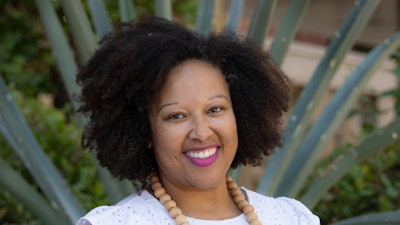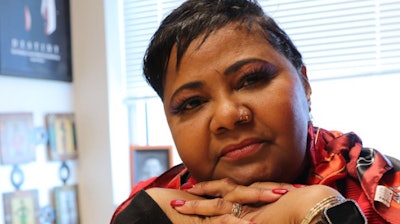The current context of education is riddled with anti-Blackness that continues to find systemic ways to harm Black children and adolescents, ranging from the persistent surveillance and pushout from educational opportunities to anti-CRT legislation that prevents all students — not just Black youth — from learning about Black history and culture. It is clear that education needs a new framework, one that loves and protects Black children and adolescents from these (and more) systemic harms while supporting their joy, resistance, growth, creativity, and healing. hooks (1990) calls this unique love and protection ‘homeplace,’ a space that provides a sanctuary that supports the wholeness and humanizing of those who collectively create and exist in said space. Said differently, homeplace is a “space where Black folx truly matter…where souls are nurtured, comforted, and fed” (Love, 2019, p. 41).
 Dr. Renae D. Mayes
Dr. Renae D. Mayes
Toward this end, the Theory into Practice Special Issue on Homeplace and Black Joy in K-12 Education offers 11 manuscripts that provide insights and frameworks of cultivating homeplace to address the intersectional identities of Black students. Also included in the special issue are recommendations for inservice and preservice educators and school counselors who may be preparing to support the creation of Black joy, mental health, social-emotional well-being, and homeplace with their current and future P-12 students. See below for information about each manuscript, which we share using abstracts. Topics include: homeplace and Black girls; STEM identity and Black boys; school principals creating student belonging though homeplace; homeplace in recruiting Black students for gifted and talented programs; and homeplace for Black LGBTQ+ identities. The complete special issue can be found by clicking this link: https://www.tandfonline.com/journals/htip20
Mayes, R. D., Kearl, B, & Ieva, K. (in press). Introduction to special issue. Theory into Practice. https://doi.org/10.1080/00405841.2023.2287760
The current sociopolitical climate in the United States has increased pressure in K-12 schools while limiting resources and opportunities to support students fully. This climate renders students, especially those who were already at the margins, more vulnerable than before. There is a need to approach education through a framework that not only recognizes the challenges students are facing, but also their joy. As such, authors discuss the ways that cultivating Black joy and homeplace address these needs and should be foundational as a part of education. Further, authors discuss the unique contributions of nine different articles around this topic for this special issue.
Lawson, T. K. (2023). Teaching homeplace: How teachers can cultivate Black joy through culturally responsive practices in the classroom. Theory into Practice. https://doi.org/10.1080/00405841.2023.2287662
 Dr. Donna Y. Ford
Dr. Donna Y. Ford




















